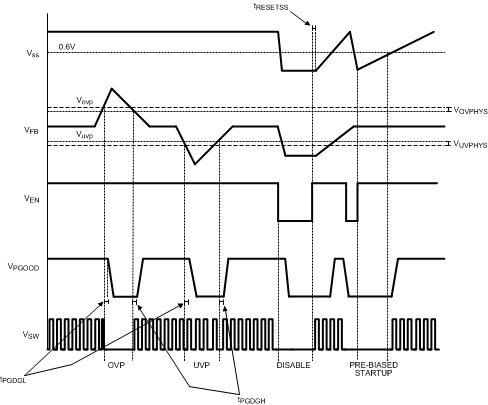SNVS715B March 2011 – June 2019 LM21212-2
PRODUCTION DATA.
- 1 Features
- 2 Applications
- 3 Description
- 4 Revision History
- 5 Description, continued
- 6 Pin Configuration and Functions
- 7 Specifications
- 8 Detailed Description
- 9 Application and Implementation
- 10Layout
- 11Device and Documentation Support
- 12Mechanical, Packaging, and Orderable Information
Package Options
Mechanical Data (Package|Pins)
- PWP|20
Thermal pad, mechanical data (Package|Pins)
- PWP|20
Orderable Information
8.3.6 Power-Good Flag
The PGOOD pin provides the user with a way to monitor the status of the LM21212-2. In order to use the PGOOD pin, the application must provide a pullup resistor to a desired DC voltage (in other words, VIN). PGOOD responds to a fault condition by pulling the PGOOD pin low with the open-drain output. PGOOD will pull low on the following conditions – 1) VFB moves above or below the VOVP or VUVP, respectively 2) The enable pin is brought below the enable threshold 3) The device enters a prebiased output condition (VFB>VSS).
Figure 19 shows the conditions that will cause PGOOD to fall.
 Figure 19. PGOOD Conditions
Figure 19. PGOOD Conditions